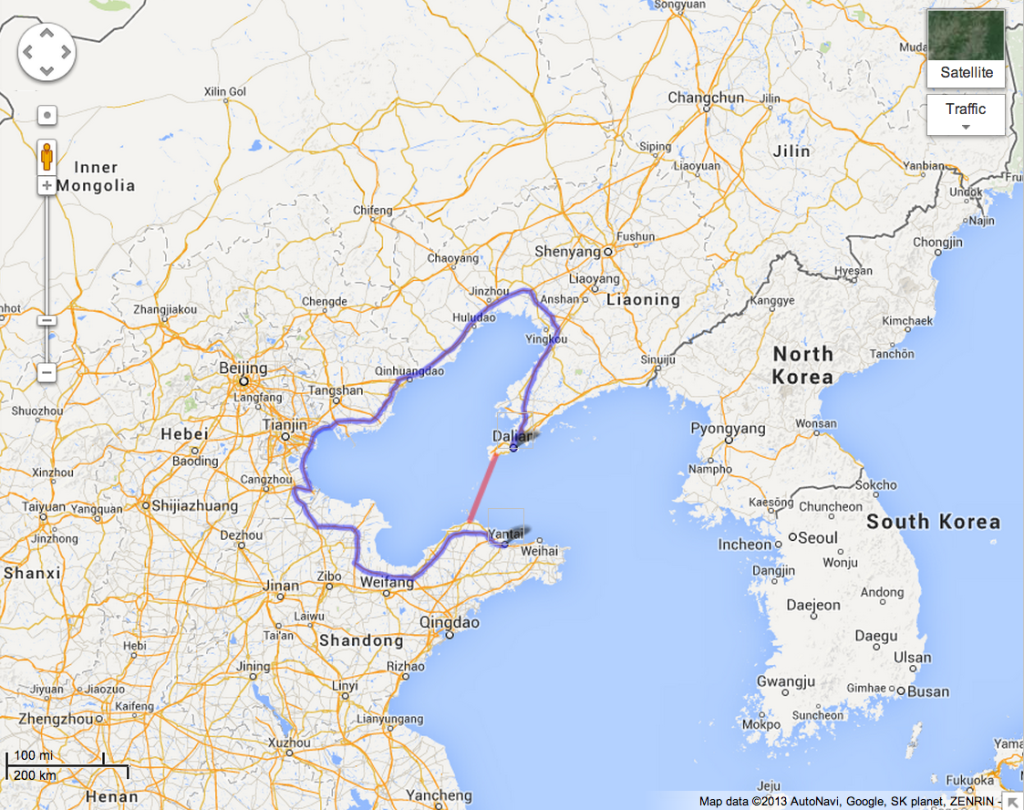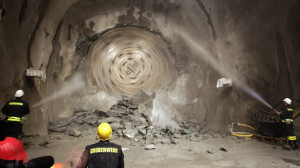
The busy ports of Dalian and Yantai are located on either side of the Bohai Sea, about 170 km (106 miles) apart. The driving time by road around the bay is about 16 hours. Engineers are planning the world’s longest undersea tunnel to shuttle freight traffic between them. It would span the opening to the bay, similar to San Franscisco’s Golden Gate Bridge.
At 123 km (76 miles) the tunnel would be the longest in the world, by quite a margin. Currently the honors goes to Japan’s Seikan Tunnel at 54 km, followed by the English/French Chunnel at 50 km.
Earthquakes
Just to make things more challenging, two major fault lines run right under the seabed at that location. The tunnel will probably need to be designed for magnitude 8.0 earthquakes.
In 1976, the Tangshan earthquake killed between 250,000 and 650,000 people. In 1888 and in 1969, earthquakes occurred within the bay itself.
Cost
The cost of the tunnel is estimated at $43.7 billion. The amount of freight passing underneath is estimated at $3.3 billion annually, meaning the payback period would be in the 13 year range.
Possible Construction Methods
China has recently completed several large tunnel projects, including the 3.8 mile-long Jiaozhou Bay Tunnel was completed in 2011, and the Xiamen tunnel,completed in 2010. Both of these tunnels used the “cut and cover” method of tunnel construction. In this method, the sea floor is dredged (i.e. trenched) and a sealed tube sections made of concrete or steel are lowered into the trench. This method requires a relatively shallow channel.
Since the tunnel is quite long, the tunnel boring machine (TMB) might have to be employed. TBM’s have been used in most large tunneling projects. They have a large rotating wheel with teeth that ‘cut’ through the rock. For the Chunnel, they were two football fields long and cut 250 feet/day.
TBM’s require that the rock does not vary greatly in hardness, else they don’t cut in a straight line. Usually a homogeneous layer of rock is chosen through which the tunnel is bored, and the tunnel will rise and fall in elevation to stay within that layer, not necessarily to match the seabed.
The third alternative, the “drill and blast” method, works by gradually dynamiting the tunnel path. This method is used where a TBM is ineffective, such as where rock conditions vary.
